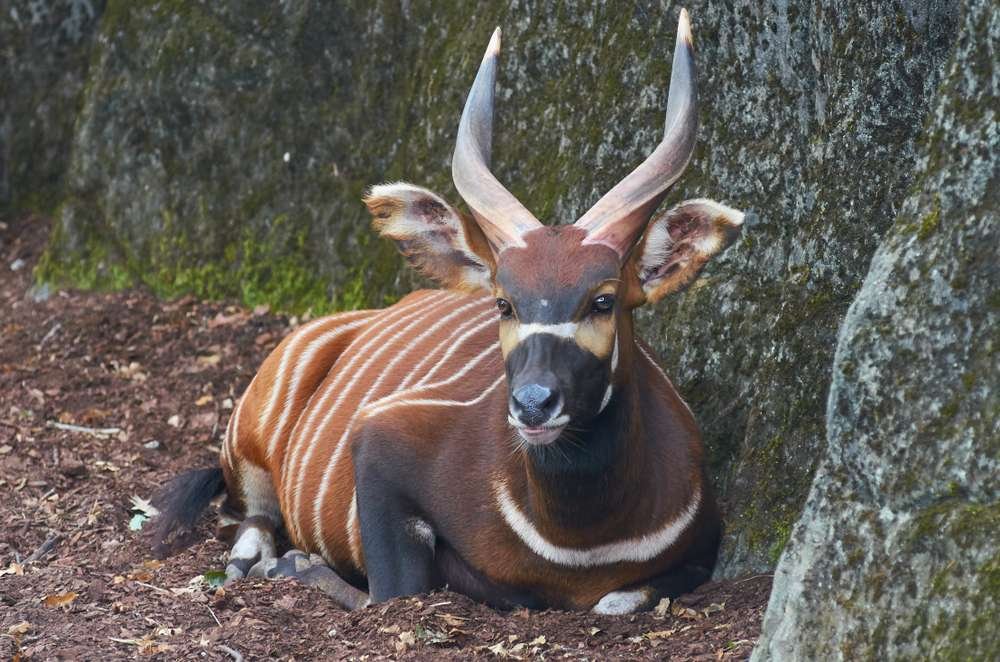Zambezi Sitatunga
( Southern Sitatunga )
- Tragelaphus spekii selousi
- IUCN Status: Least Concern
- Trend: decreasing

- Kingdom: Animalia
- Phylum: Chordata
- Class: Mammalia
- Order: Artiodactyla
- Family: Bovidae
- Subfamily: Bovinae
- Genus: Tragelaphus
Share:
General Information
The Zambezi Sitatunga or Southern Sitatunga is a subspecies found in southern Africa. In Zambia it can be found in the Kafue national park’s busanga swamps and bangweulu swamps. It is a true aquatic antelope found only in swamp grasses having specially adapted long pointy hooves to support them on marshy soil.
Fun Facts!
Description
- Shoulder height: 72–116 cm
- Length: 104–177 cm
- Weight: 24–119 kg
Ecology and Behaviour
The Sitatunga spend a large part of this time feeding. They are selective and mixed feeders. They feed mainly on new foliage, fresh grasses, sedges and browse. They are not territorial. Males may engage in locking horns with other males and attacking vegetation using their horns. They may perform feinting by raising their forelegs with the hindlegs rooted in the ground as a threat display. Sitatunga interact with each other by first touching their noses, which may be followed by licking each other and nibbling. Alarmed animals may stand motionless, with the head held high and one leg raised. Sitatunga may occasionally emit a series of coughs or barks, usually at night, which may cause other animals to join in, and these sounds can be heard across the swamp.
Predators of the sitatunga include lions, wild dogs, crocodiles and leopards.
Conservation
The sitatunga has been classified under the Least Concern category by the International Union for Conservation of Nature and Natural Resources (IUCN),
Distribution and Habitat
The sitatunga is an amphibious antelope (meaning it can live on both land and water) confined to swampy and marshy habitats. In Zambia it can be found in the Kafue national park’s busanga swamps and bangweulu swamps.
Interaction with humans
Habitat loss is the most severe threat to the survival of the sitatunga. Other threats include the increasing loss of wetlands, that has isolated populations; and long-term changes in the water level, that affects the nearby vegetation and thus bears upon their diet. Vast areas of Bangweulu and Busanga are burnt every year, placing animals like the sitatunga at grave risk given the inflammability of swamps.
No donation to this project yet.
| M | T | W | T | F | S | S |
|---|---|---|---|---|---|---|
| 1 | 2 | 3 | 4 | 5 | 6 | 7 |
| 8 | 9 | 10 | 11 | 12 | 13 | 14 |
| 15 | 16 | 17 | 18 | 19 | 20 | 21 |
| 22 | 23 | 24 | 25 | 26 | 27 | 28 |
| 29 | 30 | 31 | ||||


